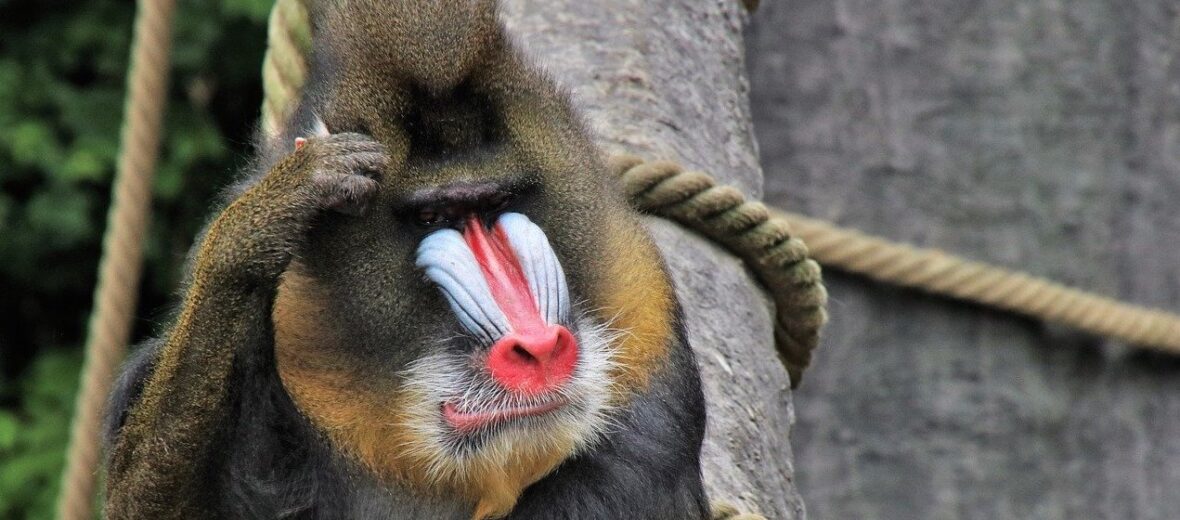
The baboon is an old world monkey that is found in Africa and Arabia. There are 5 identified species of baboons that reside in tropical rainforests, savannas, open woodlands, and semi-arid areas. They are considered pests due to their propensity for crop destruction. They are fast and ferocious when they feel threatened.
First the Stats…
Scientific name: Papio
Height: Up to 2.3 ft.
Weight: Up to 66 lbs.
Lifespan: Up to 45 years
Now on to the Facts!
1.) Baboons are a bit nomadic to an extent, in that they travel large distances in the early morning and late afternoon (to avoid the heat) in the search of food.
2.) Baboons are omnivores (they eat both plant and animal matter). Their diet consists of seeds, fruit, roots, tree bark, tree sap and a variety of insects, fish, shellfish, and even birds & small mammals.
3.) A group of baboons is called a troop. Each troop contains approximately 7 – 8 males and about 14 – 16 females, plus their babies. However, troops can extend up to 80 or more!
4.) The baboon engages in ferocious fights in order to establish dominance. These fights can result in injuries. Most fights from within the troop are typically meant for show to impress the females.
5.) Females are in charge of approving or disapproving new arrivals to the troop.
But wait, there’s more on the baboon!
6.) The baboon will use about 30 different sounds while communicating. They will bark, scream and grunt. They also smack their lips, yawn, and shrug their shoulders to communicate messages.
7.) Social bonds are established by grooming each other; removing ticks and other parasites from each other’s fur.
Did you know…?
Baboons are very clever and devise many methods of obtaining crops from farmers. This is why they are known to be pests.
8.) Baboons are very territorial and will aggressively and violently defend their troop against outsiders and would-be predators!
9.) The female will give birth to one baby after a 6 month gestation (pregnancy). If the mother dies, another female will tend to take over nursing the baby.
10.) Like other old world monkeys, baboons do not have prehensile (gripping) tails. They have tails, but they don’t use them to help climb.



